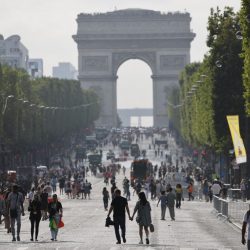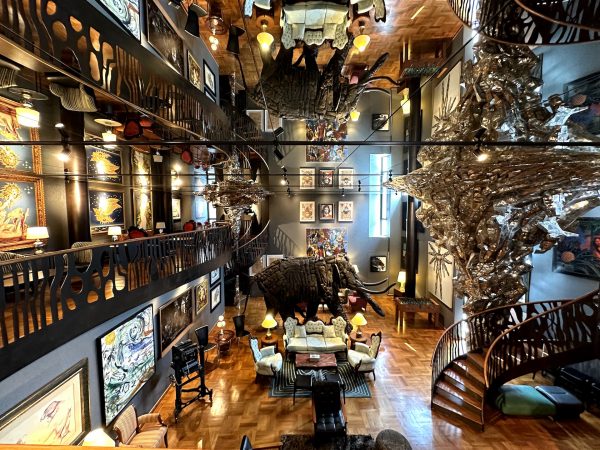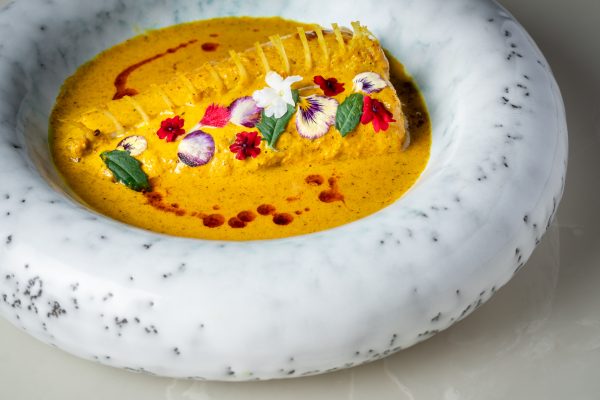Sensuous sanctity and an Isaan soul
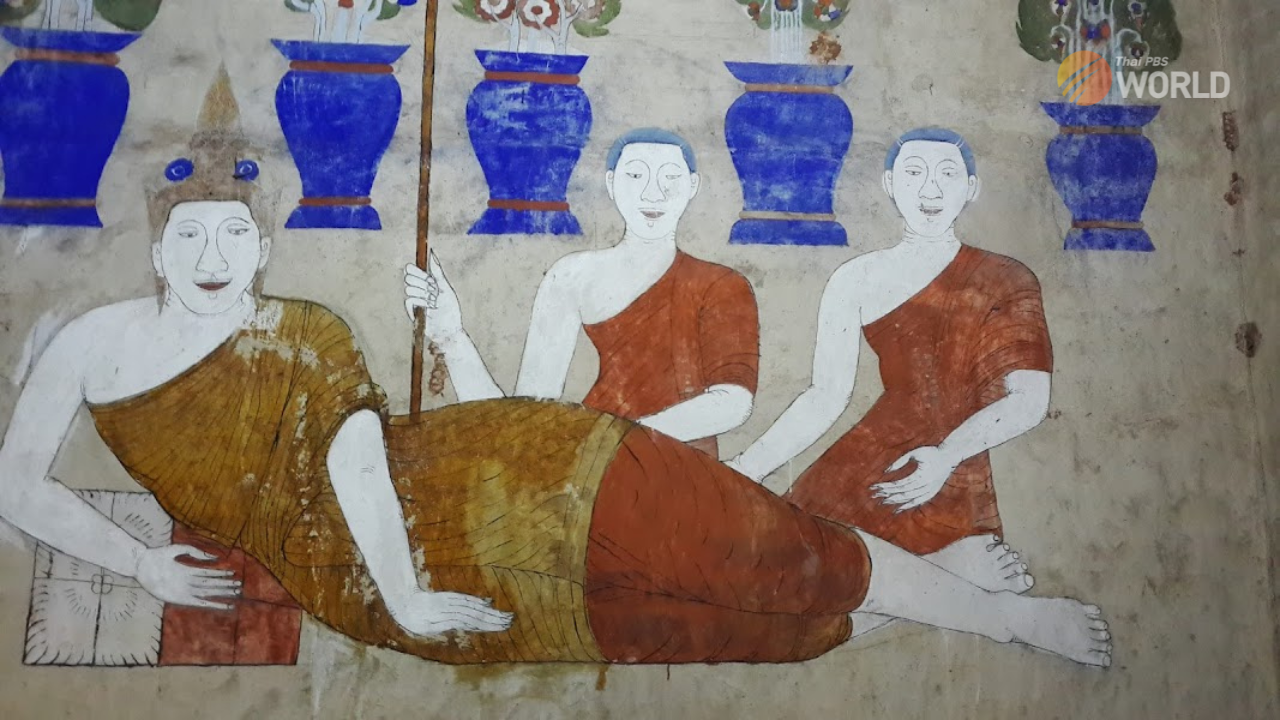
The unique Buddhist art on the walls of Isaan’s traditional ordination hall reveals the soul of the Isaan people.
From the front door, the ordination hall of Wat Yang Thuang in Maha Sarakham province, Northeast Thailand, looks only a little more attractive than a small rice barn. That is until you get close to the side walls of the ordination hall – or “sim” in the northeast dialect – and see the mural unfold like a slide show.
Lord Buddha sitting under a banyan tree, a legendary prince and his men marching against the demon king and, surprisingly, two young men exposing their white buttocks to draw attention are just a few of the many people depicted in this mural. And these paintings on the walls speak volumes about the people of Isaan.
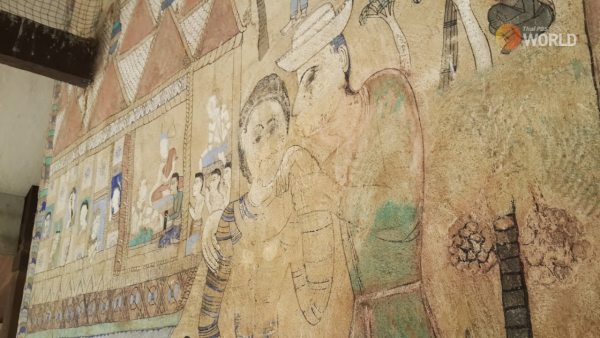
“The sim, is, in many ways, the soul of Isaan,” says Wittaya Wutthaisong, a lecturer in art history at Khon Kaen University. “Small and humble, the sim is a testament to the simplicity, beauty, honesty and faithfulness of Isaan folks.”
Visitors may want to add “mischievous”, “tongue-in-cheek” and playful” to the adjectives used to describe the Isaan sim when they see Isaan men chatting up women in the paintings on the walls.
Like the Buddhist ordination hall or Ubosot, the sim plays a major role as a centrepiece of the temple. Important rituals, such as ordination ceremonies, are conducted by the monks inside the sim.

Usually, a sim is a closed structure built of brick with limestone plaster and a firm foundation. It can be accessed by stairs on its east side, the rails of which are in the shape of the Naga, a snake-like creature with a crest. The hall is surrounded by small sandstone boundaries. The top and the roof are made of wood carved into the fashionable designs of the locale. The roof is three-tiered with an extended part resembling a bird’s wing supported by a row of columns around the hall. The walls, outer and inner, are coated with white stucco and adorned with mural paintings.
“But their main characteristic is the mural, “hub taem”, as it is called in the Lao dialect,” says Wittaya, as he leads me around the outer walls of Wat Yang Thuang’s sim. “The drawing and the cool tones of the colours suggest characteristics that are unique to the Northeast’s folk art style.”
The murals usually depict the Vessantara Jataka, the story of one of the Buddha’s past lives as prince Vessandara, who gives away everything he owns, thus displaying the virtue of perfect charity. Another side of the wall tells the Isaan folk tale of “Sin Chai”, an Isaan folklore hero who led his troops to battle the demon king. Traditionally, the local artist would paint the remaining walls with scenes, occasionally erotic, of the everyday lives of Isaan folk.
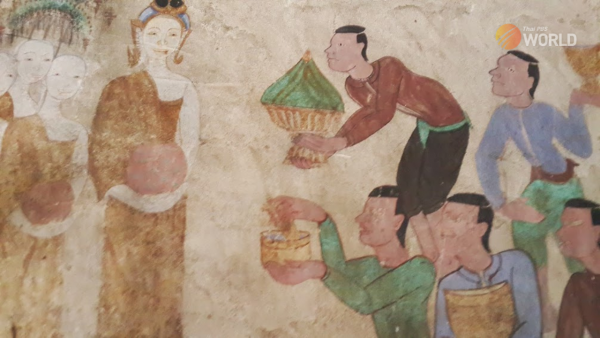
“Blue, white, yellow and black dominate the galleries because the local artists had a very limited selection of colours,” Wittaya explains. “They made the most out of local materials. The white was made from clam shells and the blue came from the local indigo plant. They used paintbrushes made of bamboo sticks.”
Folksy and original, the drawings show little, if any, influences of Siamese mainstream art. The painters drew their outlines with a pencil, and the rough sketch is occasionally visible through the colour. They then painted using a powder colour mixed with homemade glue. Their strokes were understandably rough as their brush was roughly made from bamboo.
What distinguishes the sim from other ordination halls in central Thailand is that it features mural art on the outside walls rather than the inside. This is because residents in the northeastern region would be sitting outside the ordination hall. The Isaan ordination hall is much smaller than the average ordination hall in other parts of Thailand.
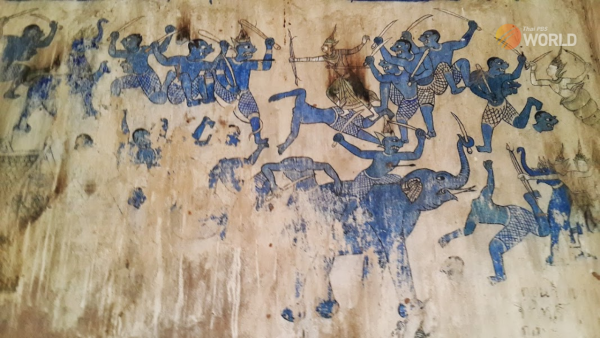
“The paintings on the outer walls would keep devotees entertained while they waited outside the sim,” Wittaya explains. “Women are not permitted to enter the chapel hall, and because the sim is so small, only a few men can sit inside.” During the religious ceremony, the rest of them would wait outside. The stories on the walls comforted and encouraged them.”
The sensual character of some of the art, with exposed bodies and graphic poses frequently making it to the chapel’s outer walls, contributed to the cheer. In the Vessantara Jataka, there is a painting of Jujaka, a greedy old Brahmin, showing his super-sized genitals, two men and a woman engaged in sensuous fondling, and, of course, those manly buttocks. They are not scenes found on the walls of Wat Pho or other famous Thai temples, but they are widespread in the Isaan area. The message is unclear, but it shows that Isaan people are not afraid to display sensuality on sim walls.
Inside though, the drawings are decent and moral though still unique. Painted in vivid yellow, rather like Vincent van Gogh’s Sunflowers series, the Lord Buddha reclines on the wall of Wat Yang Thuang’s ordination hall. Two monks, perhaps Mokhala and Saributr, hold a huge umbrella to shelter their master. It’s beautiful.
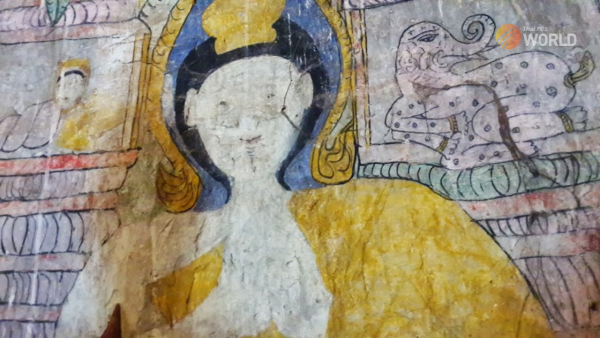
According to the university’s Culture Institution, many of the older sim have fallen by the wayside over the years. Some of the historic sim have been replaced by modern ordination halls built on the original foundations in the same lavish design seen throughout central Thailand.
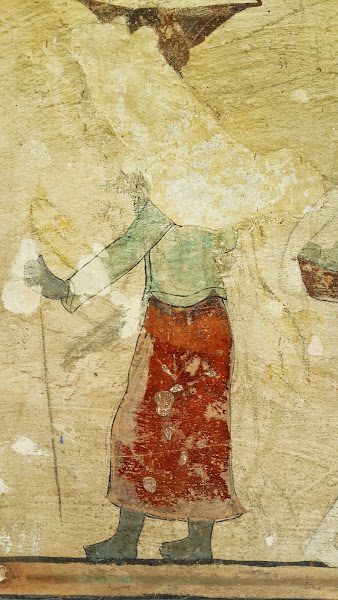 A few beautiful sim have withstood the test of time but draw little attention from villagers let alone visitors.
A few beautiful sim have withstood the test of time but draw little attention from villagers let alone visitors.
“The old sim only appeals to art history students and a few academics,” says Wittaya with regret. “The average people don’t really value it. The pride of Isaan, for the most part, is abandoned in the dust.”
DUST THEM OFF
While you’re in Northeast Thailand, you might want to check these temples for their sim.
- Wat Chaisri, Khon Kaen
- Wat Udompracharat, Kalasin
- Wat Photharam, Maha Sarakham
- Wat Palalai, Maha Sarakham
- Wat Yang Thuang, Maha Sarakham
- Wat Baan Lani, Khon Kaen
- Wat Sra Thong, Khon Kaen
By Thai PBS World Feature Desk


